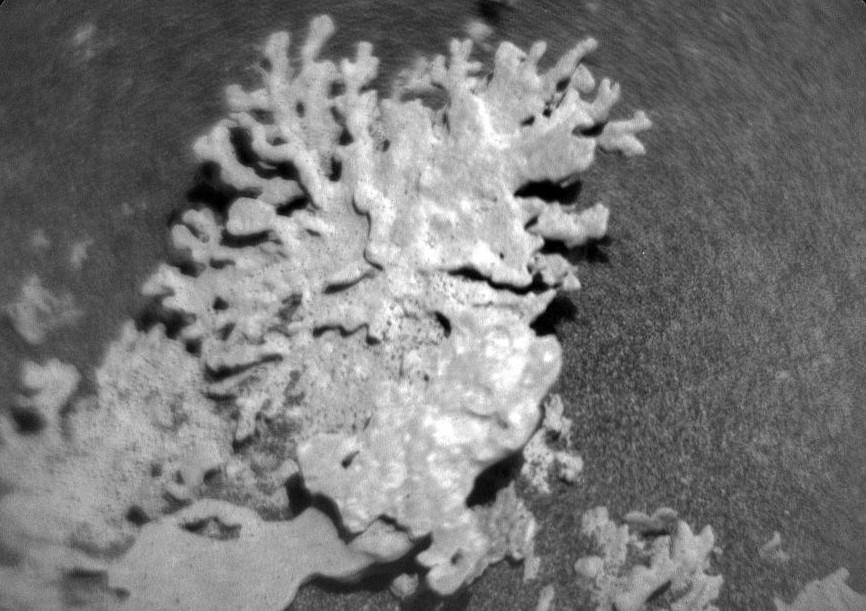
Coral-shaped Rock Spotted on Mars, NASA Shares Pic
NASA’s Curiosity Mars rover has sent back some fascinating images of the Martian surface, and the latest one has got everyone talking. A recent picture shared by NASA shows a rock on the Martian surface that bears a striking resemblance to a piece of coral. The rock was discovered in the Gale Crater, a large impact basin on Mars, and is believed to be a whopping billion years old.
The image, captured by the rover’s ChemCam instrument, is a stunning example of the geological wonders that await us on the Red Planet. The coral-shaped rock is a remarkable find, not just because of its unusual shape, but also because it provides valuable insights into the Martian geology and its evolution over time.
The Gale Crater is a fascinating region on Mars, with its towering mountains, vast plains, and towering cliffs. The crater is believed to have been formed around 3.5 billion years ago, and its unique geology has made it a prime target for scientists seeking to understand the Martian past.
The coral-shaped rock is just one of the many geological wonders that have been discovered in the Gale Crater. The rover has been exploring this region since 2012, and has sent back a wealth of information about the Martian geology, including evidence of ancient lakes, rivers, and even an ocean.
The ChemCam instrument on the Curiosity rover is a powerful tool that has helped scientists to study the Martian geology in unprecedented detail. By firing a laser at rocks and analyzing the resulting sparks, the instrument can determine the chemical composition of the rocks and provide valuable insights into their history.
In this case, the ChemCam instrument was used to analyze the coral-shaped rock and determine its age. According to NASA, the rock is believed to be around a billion years old, which is significant because it provides evidence of ancient volcanic activity on Mars.
The discovery of the coral-shaped rock is also significant because it provides further evidence of the geological diversity of Mars. The planet’s surface is characterized by a variety of rocks and minerals, including iron, magnesium, and calcium silicates, which are common on Earth.
The coral-shaped rock is just one of many geological wonders that await us on Mars. The planet’s geology is complex and fascinating, and scientists believe that it holds many secrets about the Martian past and its potential for supporting life.
As NASA continues to explore Mars with its Curiosity rover, we can expect to see many more fascinating images of the Martian geology. The rover is equipped with a range of instruments that allow it to study the Martian surface in unprecedented detail, and its findings will provide valuable insights into the Martian past and its potential for supporting life.
In conclusion, the discovery of the coral-shaped rock on Mars is a significant find that provides valuable insights into the Martian geology and its evolution over time. The image, captured by the Curiosity rover’s ChemCam instrument, is a stunning example of the geological wonders that await us on the Red Planet, and it is a reminder of the importance of continued exploration and research into the Martian surface.
Source: https://www.jpl.nasa.gov/images/pia26634-curiositys-chemcam-views-a-rock-shaped-like-coral/






